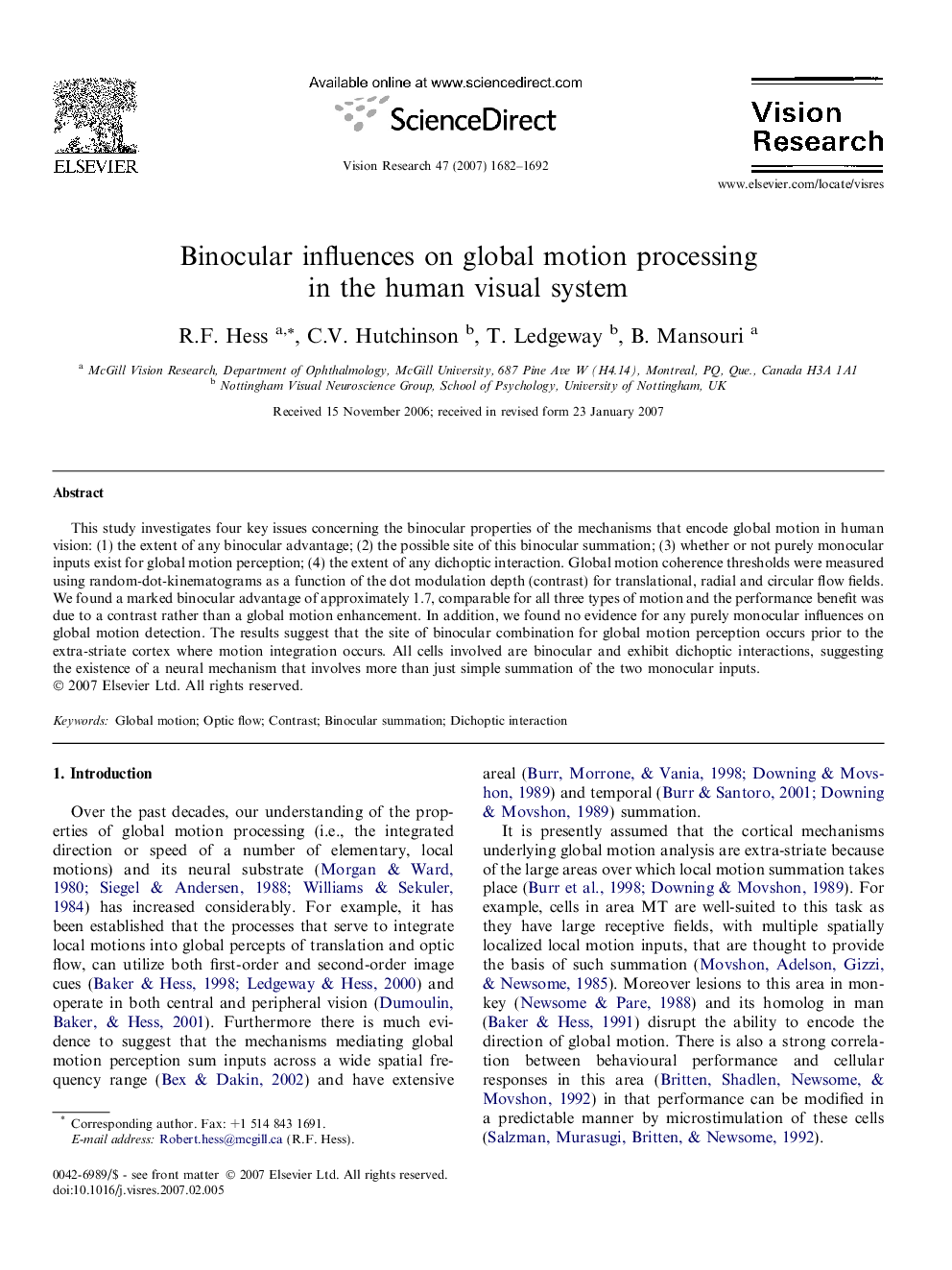| کد مقاله | کد نشریه | سال انتشار | مقاله انگلیسی | نسخه تمام متن |
|---|---|---|---|---|
| 4035699 | 1263543 | 2007 | 11 صفحه PDF | دانلود رایگان |

This study investigates four key issues concerning the binocular properties of the mechanisms that encode global motion in human vision: (1) the extent of any binocular advantage; (2) the possible site of this binocular summation; (3) whether or not purely monocular inputs exist for global motion perception; (4) the extent of any dichoptic interaction. Global motion coherence thresholds were measured using random-dot-kinematograms as a function of the dot modulation depth (contrast) for translational, radial and circular flow fields. We found a marked binocular advantage of approximately 1.7, comparable for all three types of motion and the performance benefit was due to a contrast rather than a global motion enhancement. In addition, we found no evidence for any purely monocular influences on global motion detection. The results suggest that the site of binocular combination for global motion perception occurs prior to the extra-striate cortex where motion integration occurs. All cells involved are binocular and exhibit dichoptic interactions, suggesting the existence of a neural mechanism that involves more than just simple summation of the two monocular inputs.
Journal: Vision Research - Volume 47, Issue 12, June 2007, Pages 1682–1692